William Mark Wainwright got his affectionate nickname Orbit from his friends who considered him to be something of a “space cadet”.
As William Orbit, the Hackney born musician and composer became one of the most revered producers, winning Grammys, Ivor Novellos and several other music industry awards, with 200 million recordings involving him sold worldwide.
Despite being a competent guitarist, Orbit considered himself unable to play keyboards well and admitted that it was the advent computers in music that allowed him to fully realise his creative potential. His portfolio has ranged from electronic acts like KRAFTWERK, OMD, CAMOUFLAGE, ERASURE, THE HUMAN LEAGUE, NITZER EBB and DEPECHE MODE to rock bands like QUEEN, U2 and BLUR.
However, it was within dance-oriented pop that Orbit made his fortune through productions characterised by his trancey soundscapes, sparing fretwork and understated rhythmic construction. He even had a Top5 hit bearing his own name, albeit with a radically different trance remix by Ferry Corsten of ‘Adagio For Strings’ in 2000.
Brought up in a classical music loving family, Orbit shocked his teacher parents by dropping out of school to pursue his more creative inclinations, having tried a synth for the first time at the age of 16. Things came to came to fruition when a friend wanted to start a recording studio. That venture eventually became Guerilla Studios which has now been based in various locations over the past three and a half decades.
These days, Orbit is a very content man, hosting a classical music show on Scala Radio as well as curating occasional lecture and multimedia art events. Showing little concern for the financial aspects of the music industry, his two most recent albums ‘Orbit Symphonic’ and ‘Strange Cargo 5’ were given away as free downloads on Soundcloud in 2014.
With such a vast and varied career, it would be quite tricky to compile eighteen tracks involving Orbit’s magic touch, but ELECTRICITYCLUB.CO.UK will attempt to do that with the restriction of one track per album project. So presented in chronological order, here is a Beginner’s Guide to William Orbit.
TORCH SONG Prepare To Energise (1983)
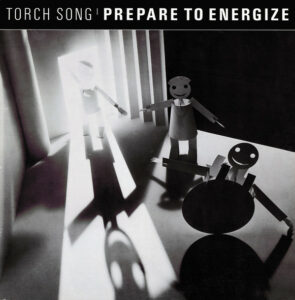 Comprising Orbit, Laurie Mayer, Grant Gilbert and latterly Rico Conning who subsequently worked with Martin Gore on the ‘Counterfeit’ collection, TORCH SONG were signed by music entrepreneur by Miles Copeland; the advance allowed for Orbit to build up his Guerilla Studios. ‘Prepare To Energise’ is probably their best known tune, a pulsating cosmic club favourite with robotic voices and synthesized textures which was maybe ahead of its time.
Comprising Orbit, Laurie Mayer, Grant Gilbert and latterly Rico Conning who subsequently worked with Martin Gore on the ‘Counterfeit’ collection, TORCH SONG were signed by music entrepreneur by Miles Copeland; the advance allowed for Orbit to build up his Guerilla Studios. ‘Prepare To Energise’ is probably their best known tune, a pulsating cosmic club favourite with robotic voices and synthesized textures which was maybe ahead of its time.
Originally available on the TORCH SONG ‘Wish Thing’ via IRS Records, currently unavailable
https://www.discogs.com/artist/10950-Torch-Song
THE PARTNERSHIP Sampling The Blast Furnace (1984)
 THE PARTNERSHIP was an unrealised side project comprising of ex-SPOONS member Brett Wickens with Roger Humphreys who together recorded as CERAMIC HELLO. Produced by Orbit and heavily influenced by KRAFTWERK, the uptempo ‘Sampling The Blast Furnace’ featured lead vocals by Andy McCluskey of OMD alongside vocodered voices and chants by Martha Ladly. The slower McCluskey-less demo was a bonus on the reissue of CERAMIC HELLO’s only album.
THE PARTNERSHIP was an unrealised side project comprising of ex-SPOONS member Brett Wickens with Roger Humphreys who together recorded as CERAMIC HELLO. Produced by Orbit and heavily influenced by KRAFTWERK, the uptempo ‘Sampling The Blast Furnace’ featured lead vocals by Andy McCluskey of OMD alongside vocodered voices and chants by Martha Ladly. The slower McCluskey-less demo was a bonus on the reissue of CERAMIC HELLO’s only album.
Not officially released, alternate demo version available on the CERAMIC HELLO album ‘The Absence Of A Canary V1.1’ via Vinyl On Demand
ERASURE Supernature – William Orbit mix (1989)
 Having artists from Mute Records and their dance subsidiary Rhythm King who included S-EXPRESS being remixed at Guerilla Studios gave Daniel Miller first-hand exposure to William Orbit’s capabilities. So who better to ask to house-up ERASURE’s cover version of Cerrone’s electronic disco landmark? The end result was suitably vibrant while still importantly retaining the core of the tune amongst all the fascinating dance rhythms and interplanetary effects.
Having artists from Mute Records and their dance subsidiary Rhythm King who included S-EXPRESS being remixed at Guerilla Studios gave Daniel Miller first-hand exposure to William Orbit’s capabilities. So who better to ask to house-up ERASURE’s cover version of Cerrone’s electronic disco landmark? The end result was suitably vibrant while still importantly retaining the core of the tune amongst all the fascinating dance rhythms and interplanetary effects.
Available on the ERASURE boxed set ‘Singles – EBX3’ via Mute Records
THE HUMAN LEAGUE The Stars Are Going Out (1990)
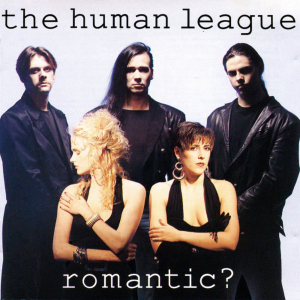 From THE HUMAN LEAGUE’s final Virgin album, ‘The Stars Are Going Out’ was a good tune from Oakey and Co that was one of four mixed by William Orbit in a bitty collection that also contained two songs produced by Martin Rushent and one by ex-ZTT cohort Bob Kraushaar. Strangely though, there appeared to be little of Orbit’s distinctive magic audible in the end result. It had been an unhappy time, as Orbit preferred to work without any of the band present.
From THE HUMAN LEAGUE’s final Virgin album, ‘The Stars Are Going Out’ was a good tune from Oakey and Co that was one of four mixed by William Orbit in a bitty collection that also contained two songs produced by Martin Rushent and one by ex-ZTT cohort Bob Kraushaar. Strangely though, there appeared to be little of Orbit’s distinctive magic audible in the end result. It had been an unhappy time, as Orbit preferred to work without any of the band present.
Available on THE HUMAN LEAGUE album ‘Romantic?’ via Virgin Records
http://www.thehumanleague.co.uk/
BASSOMATIC Fascinating Rhythm (1990)
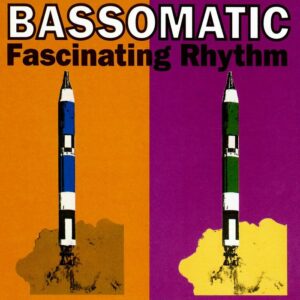 Combining modern developments in house music and dub with the feel of SOUL II SOUL, Orbit slotted right into the zeitgeist with ‘Fascinating Rhythm’ featuring vocalist Sharon Musgrave and rapper MC Inna One Step with an uplifting club friendly number that had “pulsating action” and was “breaking into heaven”. BASSOMATIC lasted for just two albums but it cemented Orbit’s position as a studio wizard who understood sound as well as the dancefloor.
Combining modern developments in house music and dub with the feel of SOUL II SOUL, Orbit slotted right into the zeitgeist with ‘Fascinating Rhythm’ featuring vocalist Sharon Musgrave and rapper MC Inna One Step with an uplifting club friendly number that had “pulsating action” and was “breaking into heaven”. BASSOMATIC lasted for just two albums but it cemented Orbit’s position as a studio wizard who understood sound as well as the dancefloor.
Available on the BASSOMATIC album ‘Set The Controls For The Heart Of The Bass’ via Virgin Records
KRAFTWERK Radioactivity – William Orbit 12″ Remix (1991)
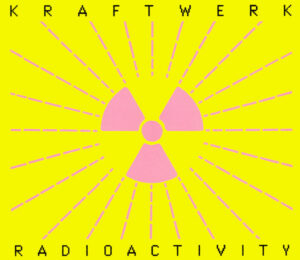 The most significant makeover on KRAFTWERK’s ‘The Mix’ was ‘Radioactivity’ with its additional unsettling machine chant of “TSCHERNOBYL – HARRISBURGH – SELLAFIELD – HIROSHIMA” for an anti-nuclear message highlighting recent atomic catastrophes. For the single release, remixes were farmed out externally and Orbit’s version offered a more preferable electro enhancement than François Kevorkian’s house laden rework.
The most significant makeover on KRAFTWERK’s ‘The Mix’ was ‘Radioactivity’ with its additional unsettling machine chant of “TSCHERNOBYL – HARRISBURGH – SELLAFIELD – HIROSHIMA” for an anti-nuclear message highlighting recent atomic catastrophes. For the single release, remixes were farmed out externally and Orbit’s version offered a more preferable electro enhancement than François Kevorkian’s house laden rework.
Originally available on the KRAFTWERK single ‘Radioactivity’ via EMI Records, currently unavailable
WILLIAM ORBIT featuring BETH ORTON Water From A Vine Leaf (1993)
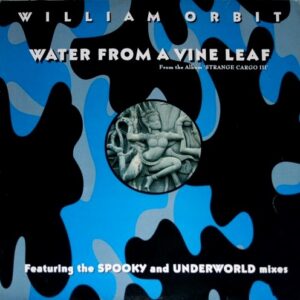 If there was a track that could be considered the root of the recognised Orbit signature sound, it probably has to be ‘Water From A Vine Leaf’, his first collaboration with kooky folktronica maiden Beth Orton. Having met at a party and beginning a relationship shortly after, he asked her to contribute spoken word phrases and singing for the third in his ‘Strange Cargo’ series over some looping rhythms, hypnotic bass and chill-out vibes. Orton went on to have a acclaimed solo career.
If there was a track that could be considered the root of the recognised Orbit signature sound, it probably has to be ‘Water From A Vine Leaf’, his first collaboration with kooky folktronica maiden Beth Orton. Having met at a party and beginning a relationship shortly after, he asked her to contribute spoken word phrases and singing for the third in his ‘Strange Cargo’ series over some looping rhythms, hypnotic bass and chill-out vibes. Orton went on to have a acclaimed solo career.
Available on the WILLIAM ORBIT album ‘Strange Cargo III’ via Virgin Records
https://www.bethortonofficial.com/
THE ELECTRIC CHAMBER Fratres (1995)
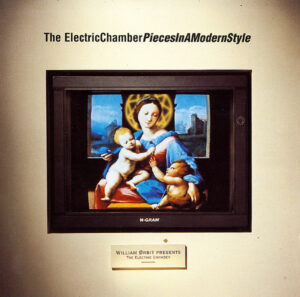 Orbit’s concept of adapting classical works came about because he wanted to make a chill-out album that had some good tunes. In his first attempt using a pseudonym, one key track was ‘Fratres’ by 20th Century Estonian composer Arvo Pärt. Comprising of a six-bar theme, Orbit gave his electronic arrangement a sublime haunting stillness that explored the piece’s rich harmonic space via a slow meditative tempo. However, Pärt objected and the album was quickly withdrawn.
Orbit’s concept of adapting classical works came about because he wanted to make a chill-out album that had some good tunes. In his first attempt using a pseudonym, one key track was ‘Fratres’ by 20th Century Estonian composer Arvo Pärt. Comprising of a six-bar theme, Orbit gave his electronic arrangement a sublime haunting stillness that explored the piece’s rich harmonic space via a slow meditative tempo. However, Pärt objected and the album was quickly withdrawn.
Originally on THE ELECTRIC CHAMBER album ‘Pieces In A Modern Style’ via N-Gram Recordings, currently unavailable
MADONNA Ray Of Light (1998)
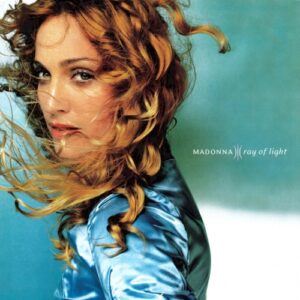 With Orbit having remixed ‘Erotica’ in 1992, Ms Ciccone was keen to work with the Englishmen, spending four and a half months at Larrabee Studios in Hollywood. ‘Ray Of Light’ was an interpolation of a little known 1971 song ‘Sepheryn’ by the British folk duo of Dave Curtiss and Clive Maldoon. Despite its frantic pace, Orbit ensured that the rhythmic elements were subtle in their make up to procure an earthy rave quality that was the antithesis of most dance music of the era.
With Orbit having remixed ‘Erotica’ in 1992, Ms Ciccone was keen to work with the Englishmen, spending four and a half months at Larrabee Studios in Hollywood. ‘Ray Of Light’ was an interpolation of a little known 1971 song ‘Sepheryn’ by the British folk duo of Dave Curtiss and Clive Maldoon. Despite its frantic pace, Orbit ensured that the rhythmic elements were subtle in their make up to procure an earthy rave quality that was the antithesis of most dance music of the era.
Available on the MADONNA album ‘Ray Of Light’ via Maverick/WEA
WILLIAM ORBIT Triple Concerto (2000)
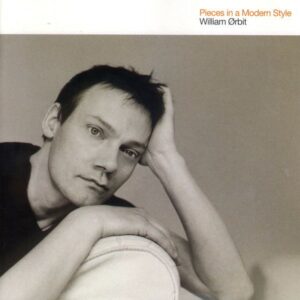 With his new found fame via Madonna, Orbit was given the opportunity to reissue ‘Pieces In A Modern Style’ and included several new recordings, one being Beethoven’s lesser known ‘Triple Concerto’. With synthetic bells and glistening pentatonics reminiscent of Ryuichi Sakamoto added for a soothing lullaby effect, use was made of the metallic percussive loop that had been part of his version of Arvo Pärt’s ‘Cantus’ from the original withdrawn album… waste not, want not!
With his new found fame via Madonna, Orbit was given the opportunity to reissue ‘Pieces In A Modern Style’ and included several new recordings, one being Beethoven’s lesser known ‘Triple Concerto’. With synthetic bells and glistening pentatonics reminiscent of Ryuichi Sakamoto added for a soothing lullaby effect, use was made of the metallic percussive loop that had been part of his version of Arvo Pärt’s ‘Cantus’ from the original withdrawn album… waste not, want not!
Available on the WILLIAM ORBIT album ‘Pieces In A Modern Style’ via WEA
https://www.facebook.com/WilliamOrbit/
ALL SAINTS Black Coffee (2000)
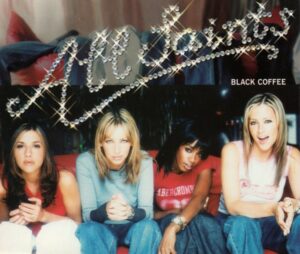 Following Madonna’s success, next in line for the Orbit treatment were London girl group ALL SAINTS. Having scored a No1 with the sublime ‘Pure Shores’ from ‘The Beach’ soundtrack, the combination did it again with ‘Black Coffee’. Orbit’s dreamy electronic aesthetics, spacey effects and minimal textural guitar worked perfectly for the soulful quartet to produce something that was commercial and accessible yet otherworldly.
Following Madonna’s success, next in line for the Orbit treatment were London girl group ALL SAINTS. Having scored a No1 with the sublime ‘Pure Shores’ from ‘The Beach’ soundtrack, the combination did it again with ‘Black Coffee’. Orbit’s dreamy electronic aesthetics, spacey effects and minimal textural guitar worked perfectly for the soulful quartet to produce something that was commercial and accessible yet otherworldly.
Available on the ALL SAINTS album ‘Saints & Sinners’ via London Records
http://www.allsaintsofficial.co.uk/
U2 Electrical Storm (2002)
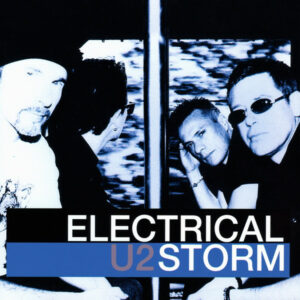 With his high-public profile thanks to Madonna and ALL SAINTS, it was no big surprise when U2 came calling. With a suitably airy beginning and heavy on acoustic guitar for the more esoteric sound that the Dubliners had been peddling since working with Brian Eno and Daniel Lanois, in the end ‘Electrical Storm’ built up to sound just like U2, albeit with occasionally prominent windy electronic textures.
With his high-public profile thanks to Madonna and ALL SAINTS, it was no big surprise when U2 came calling. With a suitably airy beginning and heavy on acoustic guitar for the more esoteric sound that the Dubliners had been peddling since working with Brian Eno and Daniel Lanois, in the end ‘Electrical Storm’ built up to sound just like U2, albeit with occasionally prominent windy electronic textures.
Available on the U2 album ‘The Best Of 1990-2000’ via Island Records
WILLIAM ORBIT featuring SUGABABES & KENNA Spiral (2006)
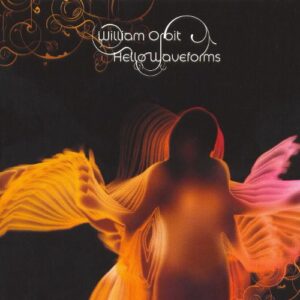 Orbit teamed up with the UK pop’s answer to Charlie’s Angels SUGABABES and US/Ethopian artist Kenna on this slice of ambient electro R’n’B. Continuing to collaborate with TORCH SONG bandmates Laurie Mayer and Rico Conning, while the ‘Hello Waveforms’ album continued in the chill-out vein of ‘Pieces In A Modern Style’ and even included ‘The Humming Chorus’ by Puccini, prominent vocals were in the mix as well as real strings and brass.
Orbit teamed up with the UK pop’s answer to Charlie’s Angels SUGABABES and US/Ethopian artist Kenna on this slice of ambient electro R’n’B. Continuing to collaborate with TORCH SONG bandmates Laurie Mayer and Rico Conning, while the ‘Hello Waveforms’ album continued in the chill-out vein of ‘Pieces In A Modern Style’ and even included ‘The Humming Chorus’ by Puccini, prominent vocals were in the mix as well as real strings and brass.
Available on the WILLIAM ORBIT album ‘Hello Waveforms’ via Sanctuary Records
https://en.wikipedia.org/wiki/Sugababes
ROBBIE WILLIAMS Louise (2006)
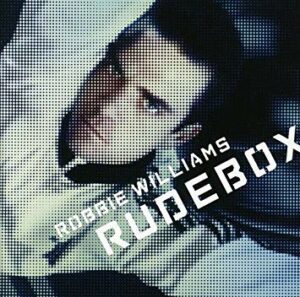 By the mid-noughties, Robbie Williams was the biggest popstar in the world but strange things were happening in the wake of his split with hit collaborator Guy Chambers. Finding a new collaborator in Stephen ‘Tin Tin’ Duffy, he belatedly went electroclash with their first fruit of labour ‘Radio’. He then went all Synth Britannia on ‘Rudebox’, working with PET SHOP BOYS but also covering his new writing partner’s ‘Kiss Me’ and THE HUMAN LEAGUE’s ‘Louise’ which Orbit produced…
By the mid-noughties, Robbie Williams was the biggest popstar in the world but strange things were happening in the wake of his split with hit collaborator Guy Chambers. Finding a new collaborator in Stephen ‘Tin Tin’ Duffy, he belatedly went electroclash with their first fruit of labour ‘Radio’. He then went all Synth Britannia on ‘Rudebox’, working with PET SHOP BOYS but also covering his new writing partner’s ‘Kiss Me’ and THE HUMAN LEAGUE’s ‘Louise’ which Orbit produced…
Available on the ROBBIE WILLIAMS album ‘Rudebox’ via EMI Records
https://www.robbiewilliams.com/
WILLIAM ORBIT featuring SARAH BLACKWOOD White Night (2010)
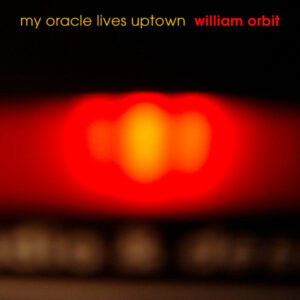 During the CLIENT hiatus, Sarah Blackwood took time out to work on ‘White Night’, a Rico Conning penned track for Orbit’s ‘My Oracle Lives Uptown’ album which dated back to their TORCH SONG days. Although her version did not appear on the final tracklisting, her take was offered as a free download. More accessible than some of CLIENT’s offerings but more purely electronic than DUBSTAR, this was a priceless pop gem which lyrically expressed her pain during that period.
During the CLIENT hiatus, Sarah Blackwood took time out to work on ‘White Night’, a Rico Conning penned track for Orbit’s ‘My Oracle Lives Uptown’ album which dated back to their TORCH SONG days. Although her version did not appear on the final tracklisting, her take was offered as a free download. More accessible than some of CLIENT’s offerings but more purely electronic than DUBSTAR, this was a priceless pop gem which lyrically expressed her pain during that period.
Originally available as a free download, currently unavailable
WILLIAM ORBIT Carmen (2010)
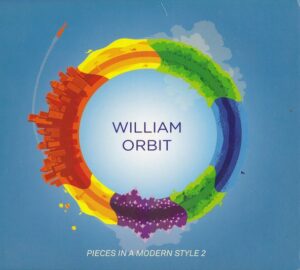 ‘Pieces In A Modern Style 2’ continued where its predecessor left off, offering another predominantly chill-out album that had some good tunes. But one of the bonuses was an unexpected novelty in a sparkling technopop version of Georges Bizet’s opera standard ‘Carmen’, complete with stabbing synths and dramatic percussive passages to portray the seductive title character as a kind of Barbarella.
‘Pieces In A Modern Style 2’ continued where its predecessor left off, offering another predominantly chill-out album that had some good tunes. But one of the bonuses was an unexpected novelty in a sparkling technopop version of Georges Bizet’s opera standard ‘Carmen’, complete with stabbing synths and dramatic percussive passages to portray the seductive title character as a kind of Barbarella.
Available on the WILLIAM ORBIT deluxe album ‘Pieces In A Modern Style 2’ via Decca Records
https://www.instagram.com/therealwilliamorbit/
BRITNEY SPEARS Alien (2013)
 A co-write with the one-time princess of pop, ‘Alien’ highlighted Britney’s feelings of loneliness. However, a vocal warm-up recording without her characteristic electronic treatment was leaked onto the internet, prompting Orbit to say in defence of the starlet: “Whomever put this on the internet must have done so in a spirit of unkindness, but it can in no way detract from the fact that Britney is and always will be beyond stellar! She is magnificent! And that’s that.”
A co-write with the one-time princess of pop, ‘Alien’ highlighted Britney’s feelings of loneliness. However, a vocal warm-up recording without her characteristic electronic treatment was leaked onto the internet, prompting Orbit to say in defence of the starlet: “Whomever put this on the internet must have done so in a spirit of unkindness, but it can in no way detract from the fact that Britney is and always will be beyond stellar! She is magnificent! And that’s that.”
Available on the BRITNEY SPEARS album ‘Britney Jean’ via RCA Records
https://www.britneyspears.com/
TRIANA TERRY Did It For Love (2013)
 Becoming a superstar producer had made Orbit unhappy and he said he was pleased to have blown his fortune as all he did was spend it on first class travel and equipment he never used. So when he recorded ‘Did It For Love’ with actress, artist and performer Triana Terry, the sentiment couldn’t have been more poignant in a feisty oddball mixture of electronic, pop and rock dynamics. Together, Orbit and Terry have presented exhibitions combining paintings and music.
Becoming a superstar producer had made Orbit unhappy and he said he was pleased to have blown his fortune as all he did was spend it on first class travel and equipment he never used. So when he recorded ‘Did It For Love’ with actress, artist and performer Triana Terry, the sentiment couldn’t have been more poignant in a feisty oddball mixture of electronic, pop and rock dynamics. Together, Orbit and Terry have presented exhibitions combining paintings and music.
Not officially released, only available on YouTube
Text by Chi Ming Lai with thanks to Simon Helm
Photos by Simon Helm
13th April 2019

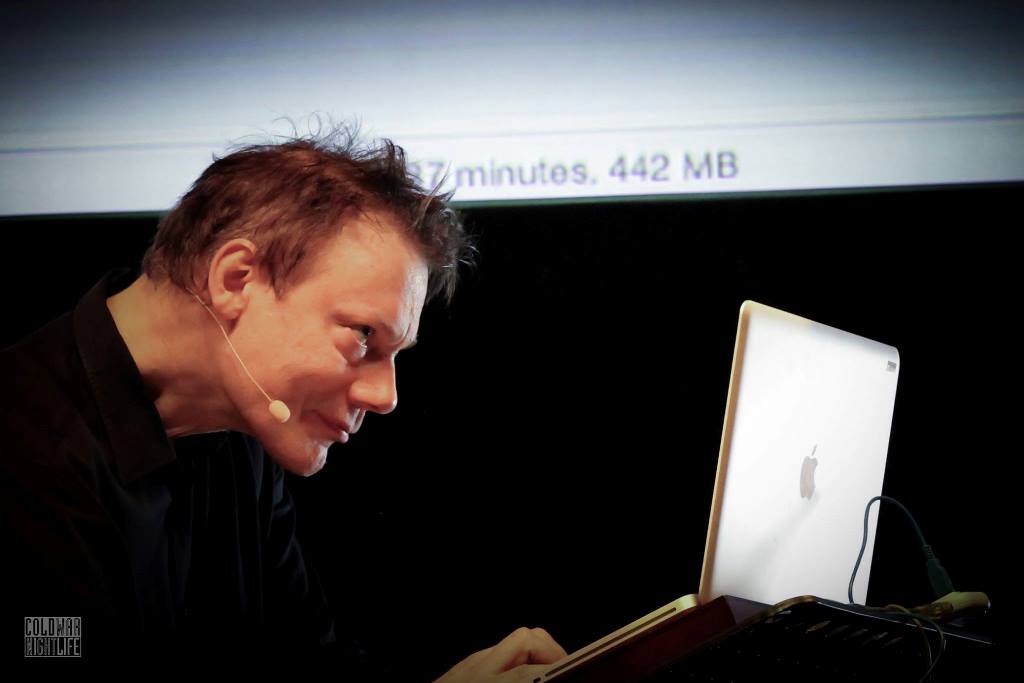
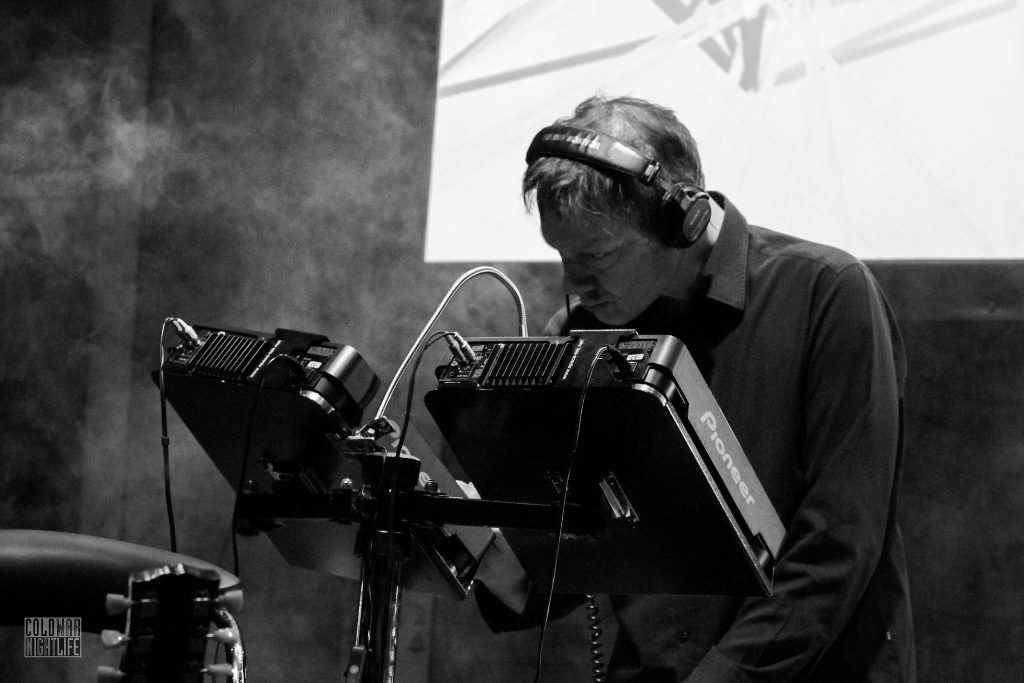
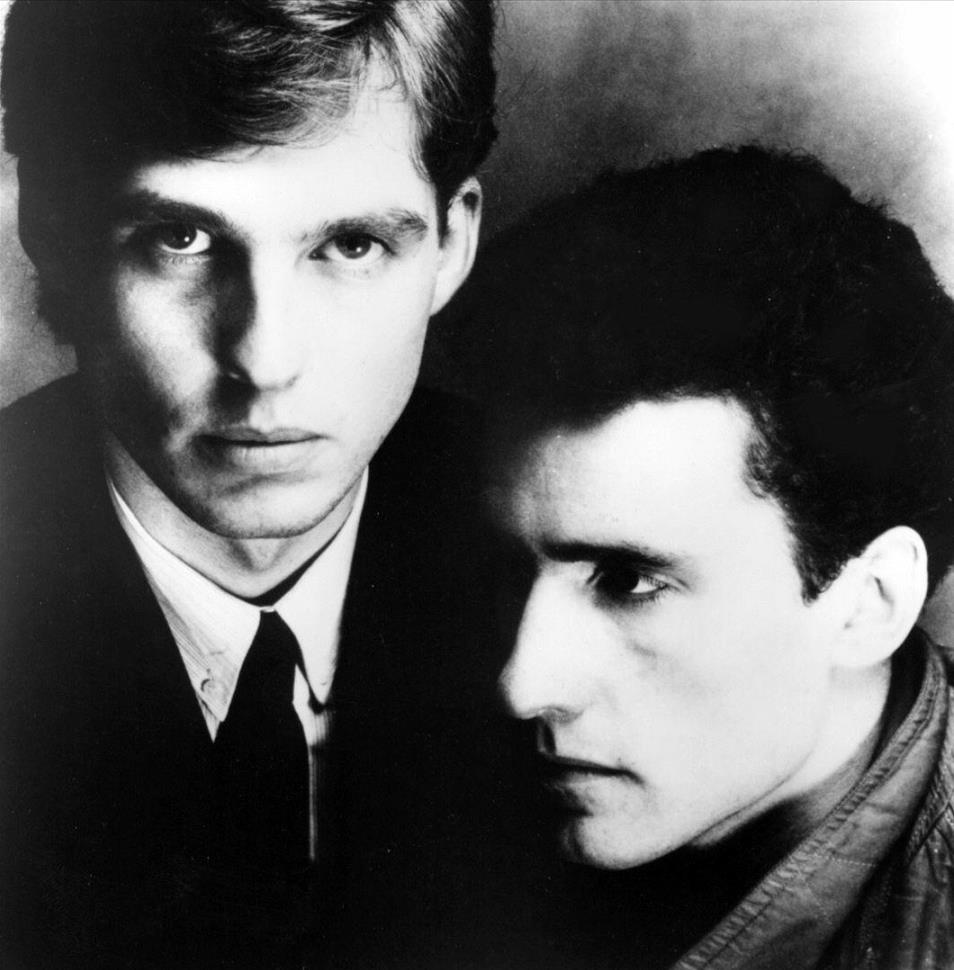
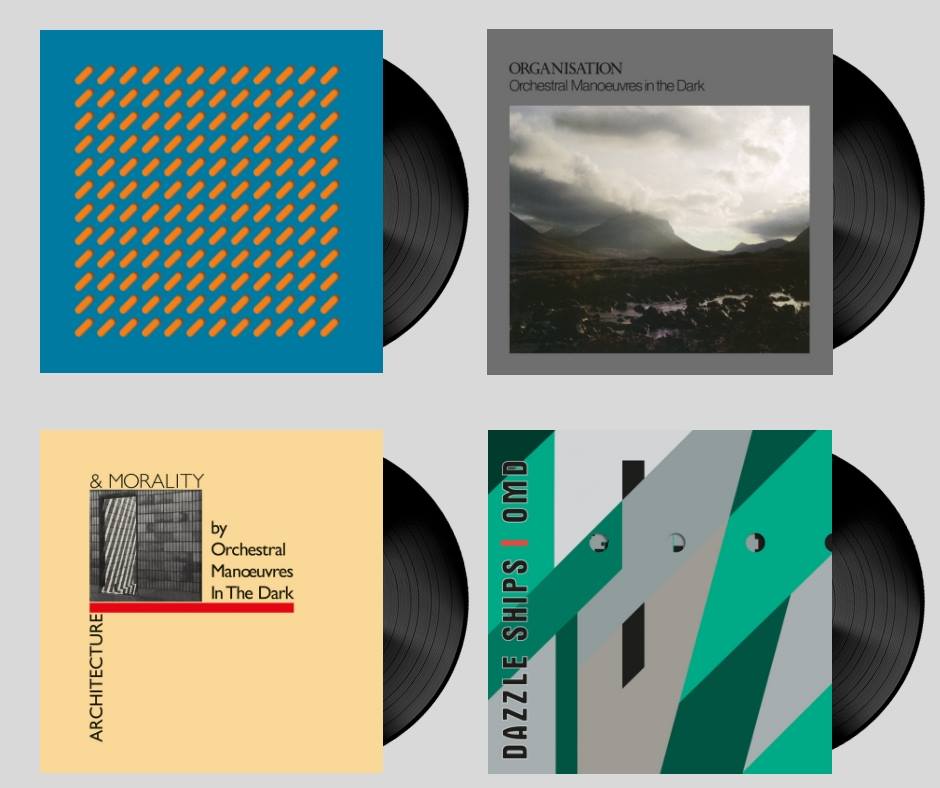
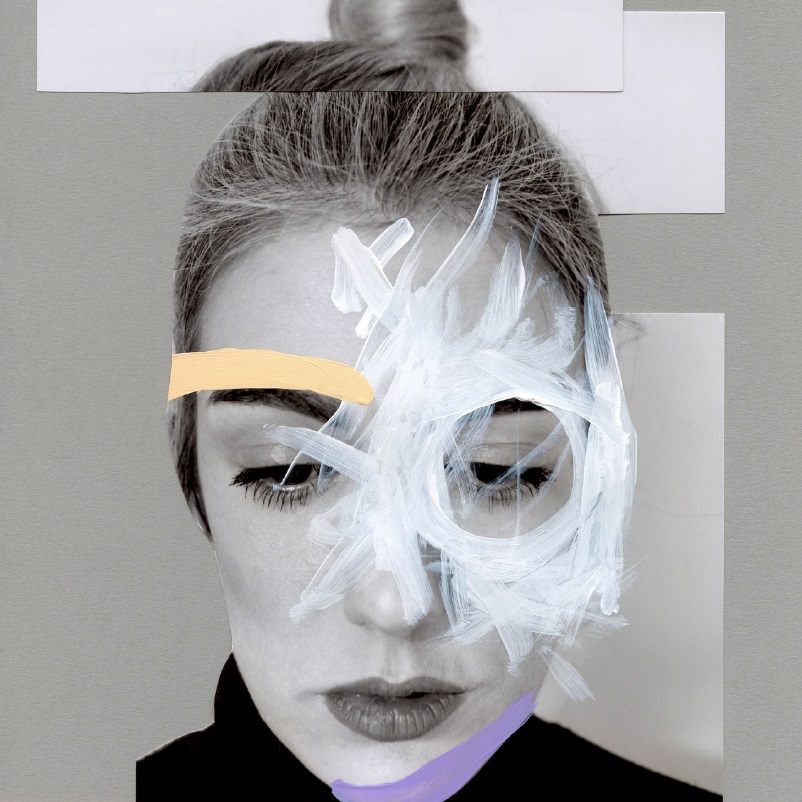

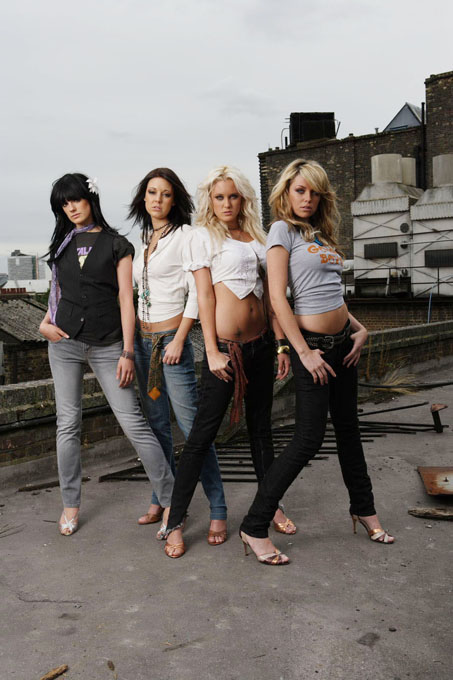



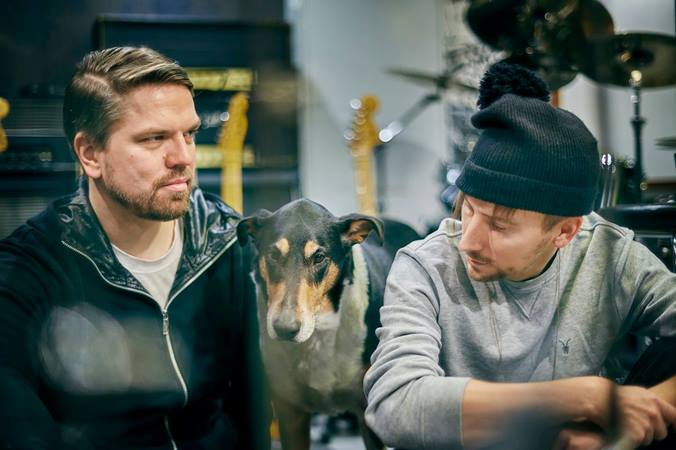
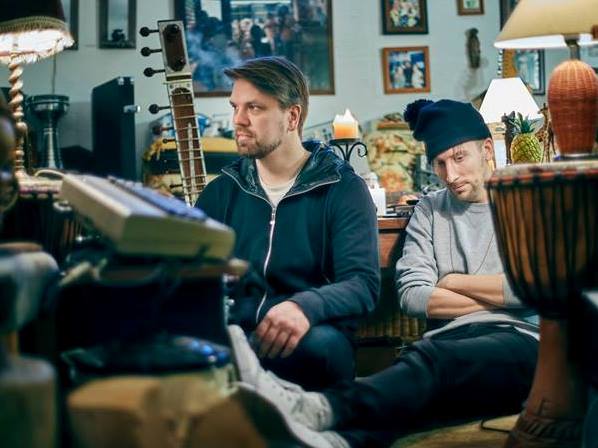
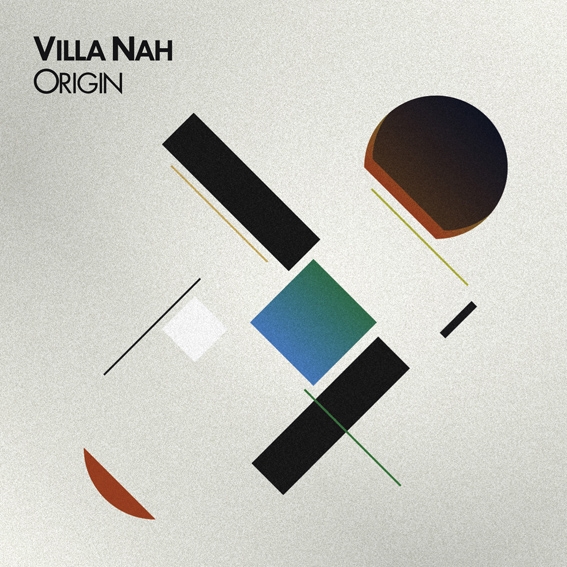
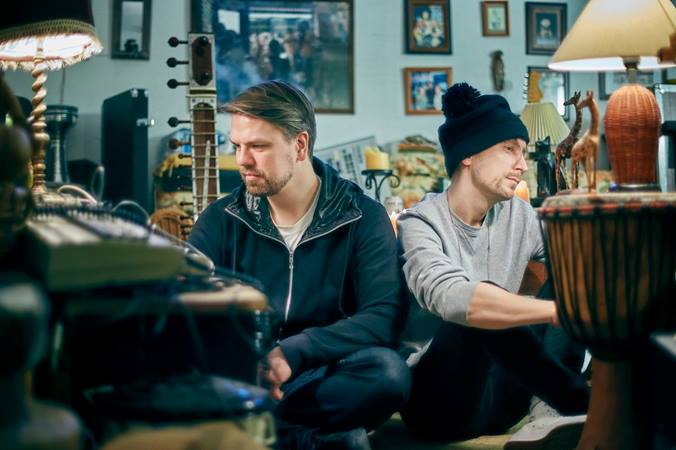
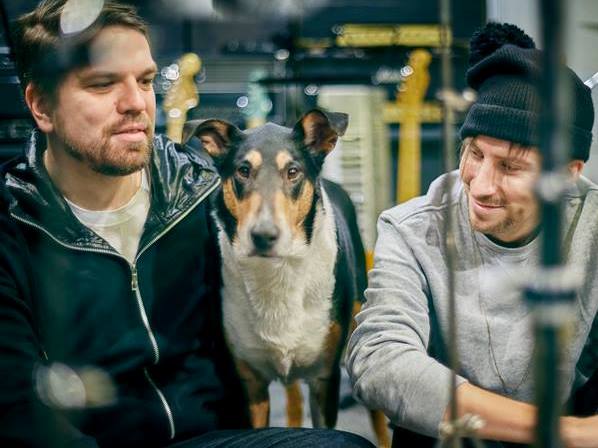
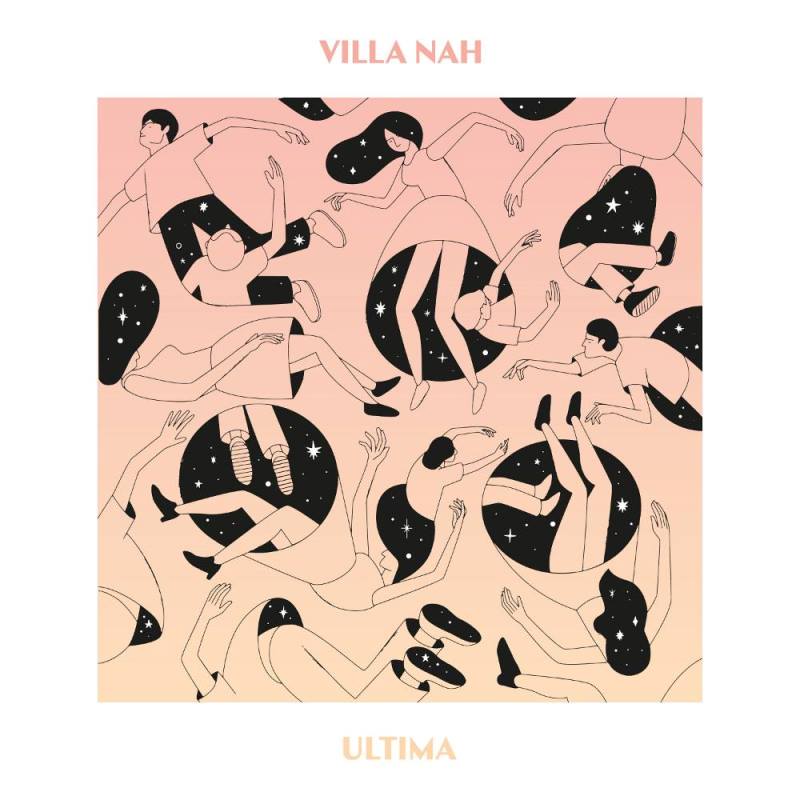
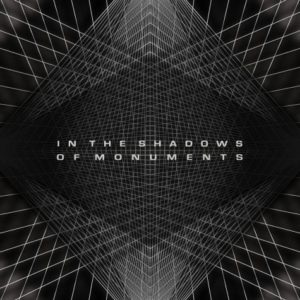
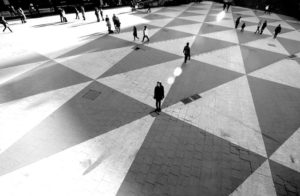
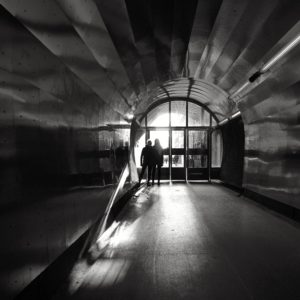
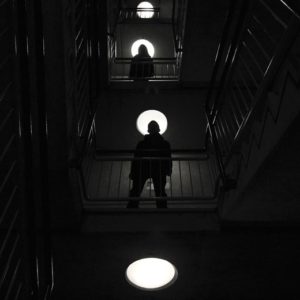
Follow Us!